The blood transfusion market is projected to increase from USD 4,605.71 million in 2022 to USD 8,710.75 million by 2032, at a CAGR of 6.58% over the forecast period 2023-2032.
A blood transfusion is a process of transferring blood or its components into the circulatory system of an individual. Blood transfusions are mainly applied to replace lost blood components in various medical situations. Blood transfusions treat sickle cell disease, anaemia, and bleeding disorders such as haemophilia and cancer.
Some of the significant factors that are driving the demand for blood transfusion market are the growing majority of infectious and chronic diseases such as cancer, acute anaemia, severe infection, liver disease, haemophilia, thrombocytopenia, sickle cell disease, kidney disease, and growing adoption of advanced technology products for blood transfusion. The boost in the blood transfusions market, owning to surgeries, deliveries, and traffic accidents, also drives the market growth. Increasing blood donation movements strongly affects market expansion. Allergic reactions, blood-borne diseases, and fever generated by blood transfusion are anticipated to hamper the market growth. The high cost of tools/instruments and lack of infrastructure facilities further slow the market growth.
This study provides a complete product, application, end user and region breakdown. The product segment includes instruments, reagents & kits, and others. The reagents & kits segment dominated the market in 2022. The sheer availability of items and the frequent purchase of these products to test a sample of donors and recipients significantly impacted the expansion of this segment. The application segment is divided into blood grouping and disease screening. The disease screening segment held the largest market share in 2022 due to the growing prevalence of transfusion-borne infections, enhanced blood donation safety screening to sustain the safety of blood transfusions, increasing technological improvements, and the comprehensive product range offered by the major competitors in the market. The end user segment is classified into blood banks, diagnostic laboratories, hospitals and others. The blood banks segment held the largest market share in 2022. This is because of the extensive blood typing and disease screening services performed before the blood transfusion therapy. These facilities are increasingly maintaining the integrity of the blood supply through comprehensive disease screening while meeting regulatory standards. Some routine tests performed on donated blood in these end-use settings include Rh typing, blood typing, and screening for infectious diseases and unexpected RBC antibodies.
The blood transfusion market is classified into North America, South America, Asia-Pacific, Europe, and Middle East & Africa. The North America region registered the largest market share in 2022 owing to rising per capita disposable income, encouraging reimbursement policies, growing health awareness and well-established healthcare facilities. The Asia Pacific region is anticipated to be the quickest-growing market during the forecast period due to growing campaigns by NGOs and governments to increase the understanding of blood donation and severe blood disorders.
Big market players in the blood transfusion market are Abbott, BAG Healthcare GmbH, Bio-Rad Labratories, Bio Kit, DiaSorin S.P.A., Danaher Corporation, F. Hoffmann-La Roche Ltd., Immucor, Inc., Health Care Bag, Immucor Inc., Ortho Clinical Diagnostics and Quotient Limited among others.
Blood Transfusion Market Analysis and Forecast, Product
Blood Transfusion Market Analysis and Forecast, Application
Blood Transfusion Market Analysis and Forecast, Application
Blood Transfusion Market Analysis and Forecast, Region
Report Description:
1. Introduction
1.1. Objectives of the Study
1.2. Market Definition
1.3. Research Scope
1.4. Currency
1.5. Key Target Audience
2. Research Methodology and Assumptions
3. Executive Summary
4. Premium Insights
4.1. Porter’s Five Forces Analysis
4.2. Value Chain Analysis
4.3. Top Investment Pockets
4.3.1. Market Attractiveness Analysis by Product
4.3.2. Market Attractiveness Analysis by Application
4.3.3. Market Attractiveness Analysis by End User
4.3.4. Market Attractiveness Analysis by Region
4.4. Industry Trends
5. Market Dynamics
5.1. Market Evaluation
5.2. Drivers
5.2.1. Increasing demand for blood and blood components
5.3. Restraints
5.3.1. Bloodborne infections due to blood transfusion
5.4. Opportunities
5.4.1. Technological advancement in the field of blood transfusion
5.5. Challenges
5.5.1. The high cost of instruments and lack of infrastructure
6. Global Blood Transfusion Market Analysis and Forecast, By Product
6.1. Segment Overview
6.2. Instruments
6.3. Reagents & Kits
6.4. Others
7. Global Blood Transfusion Market Analysis and Forecast, By Application
7.1. Segment Overview
7.2. Blood Grouping
7.3. Disease Screening
8. Global Blood Transfusion Market Analysis and Forecast, By End User
8.1. Segment Overview
8.2. Blood Banks
8.3. Diagnostic Laboratories
8.4. Hospitals
8.5. Others
9. Global Blood Transfusion Market Analysis and Forecast, By Regional Analysis
9.1. Segment Overview
9.2. North America
9.2.1. U.S.
9.2.2. Canada
9.2.3. Mexico
9.3. Europe
9.3.1. Germany
9.3.2. France
9.3.3. U.K.
9.3.4. Italy
9.3.5. Spain
9.4. Asia-Pacific
9.4.1. Japan
9.4.2. China
9.4.3. India
9.5. South America
9.5.1. Brazil
9.6. Middle East and Africa
9.6.1. UAE
9.6.2. South Africa
10. Global Blood Transfusion Market-Competitive Landscape
10.1. Overview
10.2. Market Share of Key Players in the Blood Transfusion Market
10.2.1. Global Company Market Share
10.2.2. North America Company Market Share
10.2.3. Europe Company Market Share
10.2.4. APAC Company Market Share
10.3. Competitive Situations and Trends
10.3.1. Product Launches and Developments
10.3.2. Partnerships, Collaborations, and Agreements
10.3.3. Mergers & Acquisitions
10.3.4. Expansions
11. Company Profiles
11.1. Abbott
11.1.1. Business Overview
11.1.2. Company Snapshot
11.1.3. Company Market Share Analysis
11.1.4. Company Product Portfolio
11.1.5. Recent Developments
11.1.6. SWOT Analysis
11.2. BAG Healthcare GmbH
11.2.1. Business Overview
11.2.2. Company Snapshot
11.2.3. Company Market Share Analysis
11.2.4. Company Product Portfolio
11.2.5. Recent Developments
11.2.6. SWOT Analysis
11.3. Bio-Rad Labratories
11.3.1. Business Overview
11.3.2. Company Snapshot
11.3.3. Company Market Share Analysis
11.3.4. Company Product Portfolio
11.3.5. Recent Developments
11.3.6. SWOT Analysis
11.4. Bio Kit
11.4.1. Business Overview
11.4.2. Company Snapshot
11.4.3. Company Market Share Analysis
11.4.4. Company Product Portfolio
11.4.5. Recent Developments
11.4.6. SWOT Analysis
11.5. DiaSorin S.P.A.
11.5.1. Business Overview
11.5.2. Company Snapshot
11.5.3. Company Market Share Analysis
11.5.4. Company Product Portfolio
11.5.5. Recent Developments
11.5.6. SWOT Analysis
11.6. Danaher Corporation
11.6.1. Business Overview
11.6.2. Company Snapshot
11.6.3. Company Market Share Analysis
11.6.4. Company Product Portfolio
11.6.5. Recent Developments
11.6.6. SWOT Analysis
11.7. F. Hoffmann-La Roche Ltd.
11.7.1. Business Overview
11.7.2. Company Snapshot
11.7.3. Company Market Share Analysis
11.7.4. Company Product Portfolio
11.7.5. Recent Developments
11.7.6. SWOT Analysis
11.8. Immucor, Inc.
11.8.1. Business Overview
11.8.2. Company Snapshot
11.8.3. Company Market Share Analysis
11.8.4. Company Product Portfolio
11.8.5. Recent Developments
11.8.6. SWOT Analysis
11.9. Health Care Bag
11.9.1. Business Overview
11.9.2. Company Snapshot
11.9.3. Company Market Share Analysis
11.9.4. Company Product Portfolio
11.9.5. Recent Developments
11.9.6. SWOT Analysis
11.10. Immucor Inc.
11.10.1. Business Overview
11.10.2. Company Snapshot
11.10.3. Company Market Share Analysis
11.10.4. Company Product Portfolio
11.10.5. Recent Developments
11.10.6. SWOT Analysis
11.11. Ortho Clinical Diagnostics
11.11.1. Business Overview
11.11.2. Company Snapshot
11.11.3. Company Market Share Analysis
11.11.4. Company Product Portfolio
11.11.5. Recent Developments
11.11.6. SWOT Analysis
11.12. Quotient Limited
11.12.1. Business Overview
11.12.2. Company Snapshot
11.12.3. Company Market Share Analysis
11.12.4. Company Product Portfolio
11.12.5. Recent Developments
11.12.6. SWOT Analysis
List of Table
1. Global Blood Transfusion Market, By Product, 2019-2032 (USD Million)
2. Global Instruments Blood Transfusion Market, By Region, 2019-2032 (USD Million)
3. Global Reagents & Kits Blood Transfusion Market, By Region, 2019-2032 (USD Million)
4. Global Others Blood Transfusion Market, By Region, 2019-2032 (USD Million)
5. Global Blood Transfusion Market, By Application, 2019-2032 (USD Million)
6. Global Blood Grouping Blood Transfusion Market, By Region, 2019-2032 (USD Million)
7. Global Disease Screening Blood Transfusion Market, By Region, 2019-2032 (USD Million)
8. Global Blood Transfusion Market, By End User, 2019-2032 (USD Million)
9. Global Blood Banks Blood Transfusion Market, By Region, 2019-2032 (USD Million)
10. Global Diagnostic Laboratories Blood Transfusion Market, By Region, 2019-2032 (USD Million)
11. Global Hospitals Blood Transfusion Market, By Region, 2019-2032 (USD Million)
12. Global Others Blood Transfusion Market, By Region, 2019-2032 (USD Million)
13. Global Blood Transfusion Market, By Region, 2019-2032 (USD Million)
14. North America Blood Transfusion Market, By Product, 2019-2032 (USD Million)
15. North America Blood Transfusion Market, By Application, 2019-2032 (USD Million)
16. North America Blood Transfusion Market, By End User, 2019-2032 (USD Million)
17. U.S. Blood Transfusion Market, By Product, 2019-2032 (USD Million)
18. U.S. Blood Transfusion Market, By Application, 2019-2032 (USD Million)
19. U.S. Blood Transfusion Market, By End User, 2019-2032 (USD Million)
20. Canada Blood Transfusion Market, By Product, 2019-2032 (USD Million)
21. Canada Blood Transfusion Market, By Application, 2019-2032 (USD Million)
22. Canada Blood Transfusion Market, By End User, 2019-2032 (USD Million)
23. Mexico Blood Transfusion Market, By Product, 2019-2032 (USD Million)
24. Mexico Blood Transfusion Market, By Application, 2019-2032 (USD Million)
25. Mexico Blood Transfusion Market, By End User, 2019-2032 (USD Million)
26. Europe Blood Transfusion Market, By Product, 2019-2032 (USD Million)
27. Europe Blood Transfusion Market, By Application, 2019-2032 (USD Million)
28. Europe Blood Transfusion Market, By End User, 2019-2032 (USD Million)
29. Germany Blood Transfusion Market, By Product, 2019-2032 (USD Million)
30. Germany Blood Transfusion Market, By Application, 2019-2032 (USD Million)
31. Germany Blood Transfusion Market, By End User, 2019-2032 (USD Million)
32. France Blood Transfusion Market, By Product, 2019-2032 (USD Million)
33. France Blood Transfusion Market, By Application, 2019-2032 (USD Million)
34. France Blood Transfusion Market, By End User, 2019-2032 (USD Million)
35. U.K. Blood Transfusion Market, By Product, 2019-2032 (USD Million)
36. U.K. Blood Transfusion Market, By Application, 2019-2032 (USD Million)
37. U.K. Blood Transfusion Market, By End User, 2019-2032 (USD Million)
38. Italy Blood Transfusion Market, By Product, 2019-2032 (USD Million)
39. Italy Blood Transfusion Market, By Application, 2019-2032 (USD Million)
40. Italy Blood Transfusion Market, By End User, 2019-2032 (USD Million)
41. Spain Blood Transfusion Market, By Product, 2019-2032 (USD Million)
42. Spain Blood Transfusion Market, By Application, 2019-2032 (USD Million)
43. Spain Blood Transfusion Market, By End User, 2019-2032 (USD Million)
44. Asia Pacific Blood Transfusion Market, By Product, 2019-2032 (USD Million)
45. Asia Pacific Blood Transfusion Market, By Application, 2019-2032 (USD Million)
46. Asia Pacific Blood Transfusion Market, By End User, 2019-2032 (USD Million)
47. Japan Blood Transfusion Market, By Product, 2019-2032 (USD Million)
48. Japan Blood Transfusion Market, By Application, 2019-2032 (USD Million)
49. Japan Blood Transfusion Market, By End User, 2019-2032 (USD Million)
50. China Blood Transfusion Market, By Product, 2019-2032 (USD Million)
51. China Blood Transfusion Market, By Application, 2019-2032 (USD Million)
52. China Blood Transfusion Market, By End User, 2019-2032 (USD Million)
53. India Blood Transfusion Market, By Product, 2019-2032 (USD Million)
54. India Blood Transfusion Market, By Application, 2019-2032 (USD Million)
55. India Blood Transfusion Market, By End User, 2019-2032 (USD Million)
56. South America Blood Transfusion Market, By Product, 2019-2032 (USD Million)
57. South America Blood Transfusion Market, By Application, 2019-2032 (USD Million)
58. South America Blood Transfusion Market, By End User, 2019-2032 (USD Million)
59. Brazil Blood Transfusion Market, By Product, 2019-2032 (USD Million)
60. Brazil Blood Transfusion Market, By Application, 2019-2032 (USD Million)
61. Brazil Blood Transfusion Market, By End User, 2019-2032 (USD Million)
62. Middle East and Africa Blood Transfusion Market, By Product, 2019-2032 (USD Million)
63. Middle East and Africa Blood Transfusion Market, By Application, 2019-2032 (USD Million)
64. Middle East and Africa Blood Transfusion Market, By End User, 2019-2032 (USD Million)
65. UAE Blood Transfusion Market, By Product, 2019-2032 (USD Million)
66. UAE Blood Transfusion Market, By Application, 2019-2032 (USD Million)
67. UAE Blood Transfusion Market, By End User, 2019-2032 (USD Million)
68. South Africa Blood Transfusion Market, By Product, 2019-2032 (USD Million)
69. South Africa Blood Transfusion Market, By Application, 2019-2032 (USD Million)
70. South Africa Blood Transfusion Market, By End User, 2019-2032 (USD Million)
List of Figures
1. Global Blood Transfusion Market Segmentation
2. Blood Transfusion Market: Research Methodology
3. Market Size Estimation Methodology: Bottom-Up Approach
4. Market Size Estimation Methodology: Top-Down Approach
5. Data Triangulation
6. Porter’s Five Forces Analysis
7. Value Chain Analysis
8. Global Blood Transfusion Market Attractiveness Analysis by Product
9. Global Blood Transfusion Market Attractiveness Analysis by Application
10. Global Blood Transfusion Market Attractiveness Analysis by End User
11. Global Blood Transfusion Market Attractiveness Analysis by Region
12. Global Blood Transfusion Market: Dynamics
13. Global Blood Transfusion Market Share by Product (2023 & 2032)
14. Global Blood Transfusion Market Share by Application (2023 & 2032)
15. Global Blood Transfusion Market Share by End User (2023 & 2032)
16. Global Blood Transfusion Market Share by Regions (2023 & 2032)
17. Global Blood Transfusion Market Share by Company (2022)
Market research is a method of gathering, assessing and deducing data & information about a particular market. Market research is very crucial in these days. The techniques analyze about how a product/service can be offered to the market to its end-customers, observe the impact of that product/service based on the past customer experiences, and cater their needs and demands. Owing to the successful business ventures, accurate, relevant and thorough information is the base for all the organizations because market research report/study offers specific market related data & information about the industry growth prospects, perspective of the existing customers, and the overall market scenario prevailed in past, ongoing present and developing future. It allows the stakeholders and investors to determine the probability of a business before committing substantial resources to the venture. Market research helps in solving the marketing issues challenges that a business will most likely face.
Market research is valuable because of the following reasons:
Our research report features both the aspects; qualitative and quantitative. Qualitative part provides insights about the market driving forces, potential opportunities, customer’s demands and requirement which in turn help the companies to come up with new strategies in order to survive in the long run competition. The quantitative segment offers the most credible information related to the industry. Based on the data gathering, we use to derive the market size and estimate their future growth prospects on the basis of global, region and country.
Our market research process involves with the four specific stages.

Data Collection: This stage of the market research process involves with the gathering and collecting of the market/industry related data from the sources. There are basically two types of research methods:
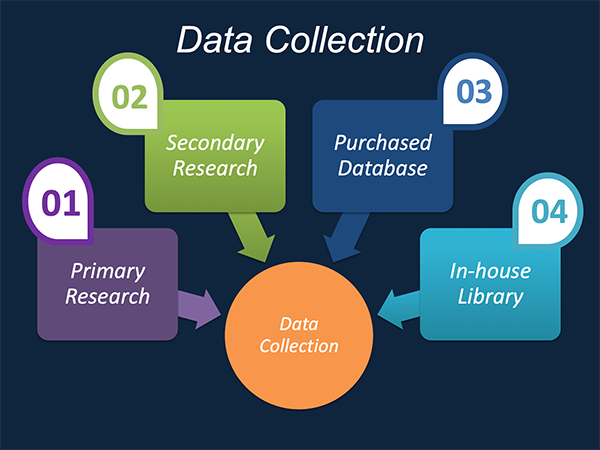
Data Synthesis: This stage includes the evaluation and assessment of all the data acquired from the primary and secondary research. It likewise includes in evaluating the information for any disparity watched while information gathering identified with the market. The data & information is gathered with consideration to the heterogeneity of sources. Scientific and statistical methods are implemented for synthesizing dissimilar information sets and provide the relevant data which is fundamental for formulating strategies. Our organization has broad involvement with information amalgamation where the information goes through different stages:


Market Formulation & Deduction: The last stage includes assigning the data & information in a suitable way in order to derive market size. Analyst reviews and domain based opinions based on holistic approach of market estimation combined with industry investigation additionally features a crucial role in this stage.
This stage includes with the finalization of the market size and numbers that we have gathered from primary and secondary research. With the data & information addition, we ensure that there is no gap in the market information. Market trend analysis is finished by our analysts by utilizing data extrapolation procedures, which give the most ideal figures to the market.
Data Validation: Validation is the most crucial step in the process. Validation & re-validation through scientifically designed technique and process that helps us finalize data-points to be used for final calculations. This stage also involves with the data triangulation process. Data triangulation generally implicates the cross validation and matching the data which has been collected from primary and secondary research methods.





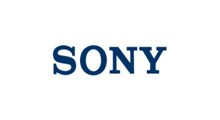

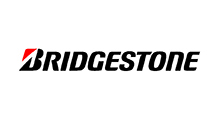

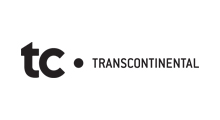















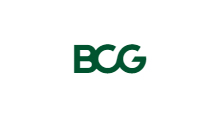


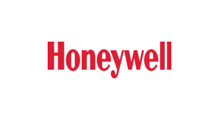

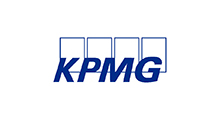
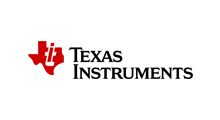



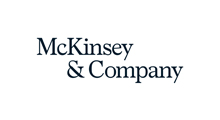

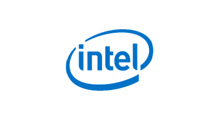







Free Customization
Countries can be added on demand
Free yearly update on purchase of Multi/Corporate User License
Companies served till date

We serve our customers 24x7 for 365 days through calls, emails and live chat options.
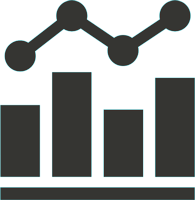
Huge database of exceptional market reports bringing market intelligence to your fingertips.

SSL enabled, we offer you various secured payment options for risk free purchase.